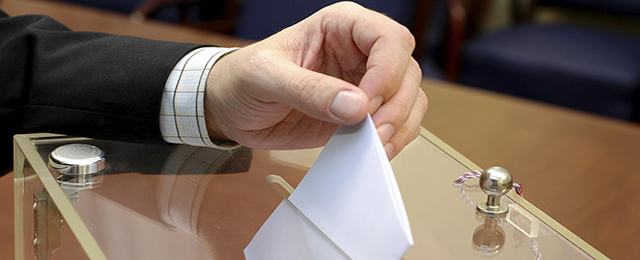This article was originally published on Fair Observer.
On May 7, the British electorate will take to the polls in an election that seems virtually certain to end in a second consecutive hung parliament. Though it has been widely predicted that no party will possess sufficient seats among the 650 in Westminster to form a majority government, what remains unpredictable is the form an eventual government will take. The results that emerge on May 8 are likely to be followed by days, or even weeks, of negotiations toward the creation of a viable coalition.
In 2010, when the right-wing Conservative Party and the Liberal Democrats — who had long been the United Kingdom’s third largest party, with no experience of government at that time — combined to form a coalition that few had expected ahead of the election. Their marriage was one of convenience, and arguably necessity, as it represented the only way two parties could command an overall majority in parliament.
In 2015, however, polls indicate that Labour, the main opposition party, are at risk of losing many of their Scottish seats to the Scottish National Party (SNP), while the anti-EU United Kingdom Independence Party (UKIP) may chip away at the Conservatives’ current holdings.
The Liberal Democrats, meanwhile, have suffered from being the minor partner in the ruling coalition, failing to promote their successes in tempering the Conservatives’ austerity program, and are also likely to see their tally diminish. The presence of several smaller parties, including some like the Greens and Wales’ Plaid Cymru, who have gained in prominence during this year’s election coverage, will fog the post-election political landscape even further.
Just ahead of the election, the two main parties remain extremely close in polling, with many aggregate polls indicating as little as 1% between them. Notably, Britain’s first-past-the-post electoral system — in which each constituency is won by the party with the largest share of the vote, regardless of whether this represents a majority of the electorate in that seat — means that the significant poll counts of some of the smaller parties will not translate into a similar share of seats. UKIP, for example, has a support base that is far too thinly spread across the country for them to claim anything like the number of seats that would reflect their poll level, currently around 14%; they are, in fact, unlikely to win more than one or two seats.
WHY IS THE UK 2015 GENERAL ELECTION RELEVANT?
The result of the 2015 UK General Election could represent the diminishing of the Conservative-Labour dominance that has characterized much of the last century. It seems highly likely that in order to command a majority in Westminster, any government will have to include at least three parties. While the resulting horse-trading and compromise over policies and pre-election promises are familiar to many countries in Europe and beyond, this is something with which British parties have had very little recent experience.
The matter is complicated by the supposed red lines held by certain policies. Labour leader Ed Miliband, for instance, has ruled out a coalition with the SNP due to its stance on Scottish independence, despite the willingness of the party to support a Labour-led government, not to mention the fact that such an alliance could prove necessary if Miliband is to take over 10 Downing Street. An alternative arrangement may see one or more parties offering support to a minority government’s legislative program on a case-by-case basis, without being part of a formal coalition.
The unpredictable nature of the post-election environment, and the virtual certainty of in-depth negotiation between the parties, means that no political party will be able to carry out its manifesto in full. As such, the positions of each party represent a mere starting point for negotiation over policies that often diverge in profound ways.
Among the landmark policy areas of the 2015 election are the future of the economy, the UK’s status in the European Union (EU) and the country’s immigration control. The parties’ stances on each of these issues could prove potently divisive during negotiations.
Under the Conservative-led coalition, the British economy has started to emerge from the malaise of the previous decade’s financial crash. In 2014, the economy grew by 2.8%, and wages are gradually rising. Meanwhile, the national deficit has been reduced by around a third. However, the government has faced persistent criticisms for failing to keep borrowing in check, or for placing too much faith in its policy of austerity as an economic panacea.
All three of the major parties promise to continue to lower the deficit, and though opposition to this as an overall priority has been voiced by both the Greens and Plaid Cymru, the influence of either party in any governing arrangement would likely be too small to hold much influence. The differences between the three main parties are to be found in the speed with which the deficit is to be reduced, and the balance sought between tax rises and spending cuts. Whatever form the next government takes, it will face the difficulty of continuing both deficit reduction and economic growth.
This article was originally published on Fair Observer.
*Continue reading at Fair Observer. You can follow James Butler on Twitter here.






Be the first to comment on "The UK general election explained"